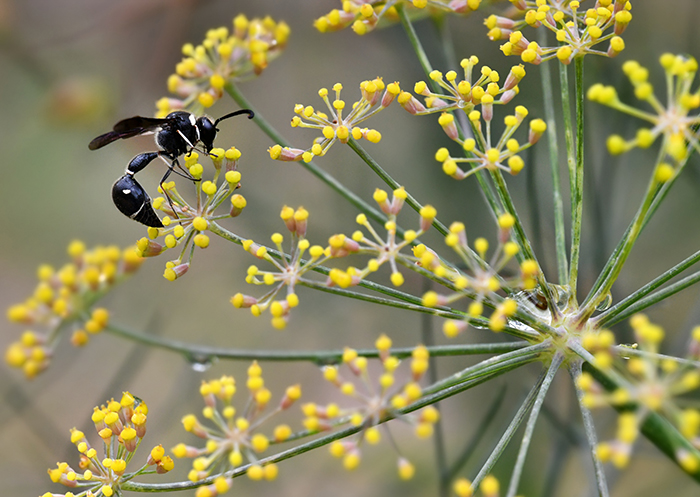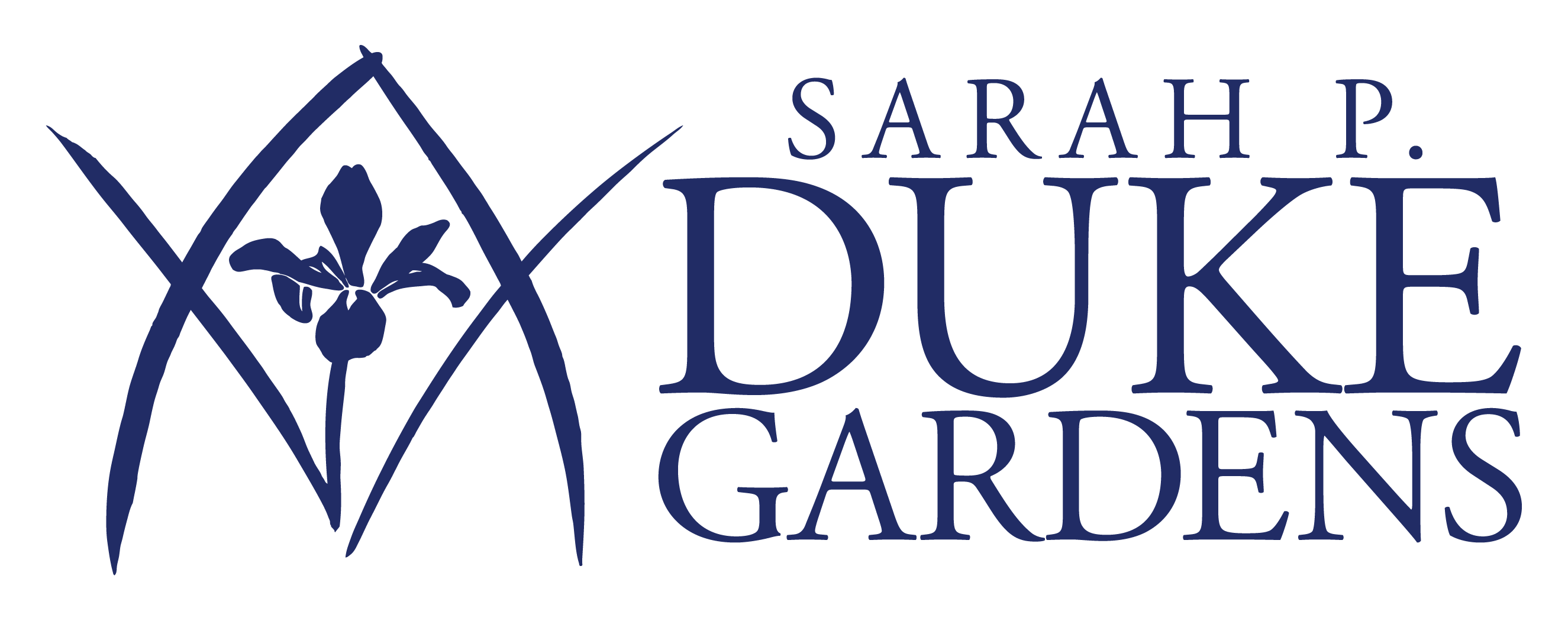
A pollinating wasp on fennel flowers (Foeniculum vulgare) in the Mary Duke Biddle Rose Garden, by William Hanley.
Pollinator Week is an opportunity to celebrate all the incredible animals whose lives are intertwined with the plants that we love, including birds, bees, butterflies and bats. However, these are far from the only pollinators in the world, merely the best-known. Many other creatures like ants, beetles, wasps and flies are pollinators in their own right, and deserve similar recognition for their hard work and effort.
Beetles (order Coleoptera) are the most numerous group of animals on the planet, comprising approximately a quarter of all known species. It’s only natural that some of them would take up pollination given their sheer diversity. If you’ve ever opened a southern magnolia flower (Magnolia grandiflora), you may have disturbed one or two buzzing beetles completely covered with pollen at the center of each bloom. Magnolias and beetles have a special relationship because magnolias, one of the earliest known species of flowering plants, evolved millions of years before many other pollinators emerged. Ditto for other older floral lineages like sweetshrub (Calycanthus spp.), tulip poplar (Liriodendron tulipifera) and water lilies (Nymphaea spp.) That said, beetles also visit a wide variety of more recently evolved species, especially those that open during the day, smell strongly of fruit or are white and green in color.
Wasps (order Hymenoptera, subfamily Apocrita) may get a lot of bad press, but most species are harmless to humans and use their stingers solely to paralyze the insect hosts in which they lay their eggs. They are not as effective as bees at pollination because their bodies are smooth and lack hair for pollen to cling to, but they are both industrious and abundant, particularly on plants with lots of small flowers clustered tightly together like mountain mint (Pycnanthemum spp.) and goldenrod (Solidago spp.). In fact, while most common fig (Ficus carica) cultivars in our region do not require pollination to bear edible “fruits” (actually fleshy and delicious flowers), many fig varieties such as Calimyrna depend on tiny specialized fig wasps for pollination. Without the wasps, there would be no crop to harvest.
Ants (order Hymenoptera, family Formicidae) might seem like unlikely pollinators due to their lack of wings, but believe it or not, they are closely related to bees and wasps and share their love for sugary sweet floral nectar. Because ants are limited in their movements, ant-pollinated plants tend to be low-growing with smaller flowers close to the stem, which makes it easier for their pollinators to reach them. However, not every ant you see on a flower is a pollinator. Some take proffered nectar without taking pollen or secrete antibodies that kill any pollen grains attached to them. While ant-pollinated plants are more common in the tropics, there are a few temperate species as well, including Small’s stonecrop (Sedum [Diamorpha] smalli), a rare southeastern endemic. Further research may reveal that plant species previously considered to be self-pollinators are actually ant-pollinated as well.
Rounding off our series of unlikely pollinators are the flies (order Diptera). A few plant species specialize in luring carrion-eating flies with deep crimson flowers that smell like rotten meat, such as pawpaws (Asimina triloba) and corpse lily (Rafflesia sp.). By the same token, many conventionally attractive flowers draw reams of colorful “flower flies” (family Syrphidae) throughout the summer and fall. To avoid predation, many flower flies mimic the appearance of bees and wasps, although they cannot erase the obvious “tells”—huge compound eyes, a single pair of wings and the ability to hover in mid-air, hence their other common name of “hoverflies.” They also lack the ability to sting entirely, making them all buzz and no bite. Smaller, less well-known flies that are collectively known as “fungus gnats” (because their larvae feed on, you guessed it, fungi) pollinate smaller or unusually shaped and colored flowers like jack-in-the-pulpits and cobra lilies (Arisaema spp.), which are often ignored by other animals.
As you can see, pollinators come in a wide and often unexpected range of shapes and sizes and include many species that may not normally come to mind. This Pollinator Week, take time to seek out these lesser-known pollinators here at Duke Gardens and in your landscape. You’ll be pleasantly surprised by how many you can find.
